“The Five Sons of Jared and Charity Pratt,” Ensign, Oct. 1979, 52
The Five Sons of Jared and Charity Pratt
Most of us know of Parley P. Pratt and his brother Orson—energetic, intellectual, indefatigable missionaries and writers, much of whose lives brighten the first years of the Church as examples of sacrifice and devotion. But we are not familiar with the full family setting of Charity Dickinson and Jared Pratt, whose five sons and their responses to the gospel ranged from rejection to apostleship.
The family, in Orson’s words, “numbered among the poor of this world.”1 They moved from settlement to settlement in New York, working as farmers and as day laborers for others. The first child, Anson, was born in Canaan in 1801, William Dickinson in Wooster in 1802, Parley in Burlington in 1807, and the last two boys were both born in Hartford—Orson in 1811 and Nelson in 1815. The family attended Presbyterian, Baptist, and Methodist services impartially without joining any of them.
Jared had been trained as a weaver before the invention of the steamdriven loom destroyed his occupation. He encouraged his sons to get as much schooling in the public schools as possible, but as soon as the boys were old enough they began working for wages on neighboring farms and were self-sufficient at an early age. Yet, despite the social forces fragmenting the family, they seem to have remained close and united, trying to combine forces whenever possible.
For example, in 1823, Jared, his twenty-one-year-old son William, and sixteen-year-old Parley tried to buy some land and clear its hardwood forest near Ostego, New York. Despite their improvements and hard work, they could not raise enough money to make the payments, and after struggling desperately for three years, lost everything. Disgusted with such commercialism, Parley retired dramatically into the Ohio woods for a winter of solitude, venison, and Bible reading. He emerged at age twenty well-founded in the scriptures and convinced that loneliness was not a good thing. He returned to the family home in Canaan and proposed to Thankful Halsey, a friend with whom he had had a youthful understanding for the past three years. They were married in 1827 and returned to his Ohio clearing in the forest.2
Meanwhile, in 1825 twenty-four-year-old Anson had taken fourteen-year-old Orson with him to Hurlgate, Long Island, where they both found work and Anson found a wife, Sarah Barber.3 Anson and his Sarah settled down there, not far from New York City, while Orson eventually moved back to Canaan.
William had already disappeared in New York City in search of work; the family heard nothing from him for several years and feared him dead when a William Pratt was reported drowned in the Hudson River. This was not their William, though, as it turned out. He, like Orson, had been traveling somewhat aimlessly and was in Ohio in 1830, where his youngest brother Nelson had moved.
While the Church was being restored in New York, Parley and Orson were prepared in their own way to accept the gospel message. A traveling preacher named Sidney Rigdon came through in 1829 preaching “the very principles which I had discovered years before; but could find no one to minister in.” He and Thankful became part of an association organized by Sidney Rigdon even though the “one great link” of authority was still missing. His earnest study and prayer was rewarded with a great desire to read the scriptures; and by early 1830, he “began to understand the things which were coming.” (Autobiography, pp. 31, 33.)
Deciding to forsake all for God’s service and be a minister, he sold his property and, along with Thankful, made connections with a Cleveland schooner bound for Buffalo. But part way there, in Newark, he felt compelled to disembark, sending Thankful on alone. Within twenty-four hours, he had the Book of Mormon in his hands, given him by a fellow minister. A few hours later, “I knew and comprehended that the book was true. … My joy was now full.” (Autobiography, pp. 36–37.) On 1 September 1830, Oliver Cowdery baptized him in Seneca Lake and ordained him an elder.
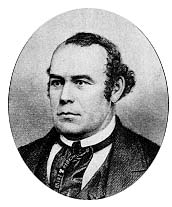
Parley P. Pratt.
He returned immediately to Canaan where he joyfully preached the gospel to his family. Eighteen-year-old Orson had been praying “very fervently, repenting of every sin” since the previous autumn, and Parley baptized him on his nineteenth birthday, the only person in the area to accept the gospel message. By the next month, Orson was in Fayette, New York, visiting the Prophet and receiving a revelation, now section 34, and his own ordination to missionary labors. [D&C 34]
That winter, Parley accompanied Oliver Cowdery, Ziba Peterson, and Peter Whitmer, Jr., on the first mission to the Lamanites in Missouri. On the way, they stopped in Kirtland, and preached to and baptized Parley’s former teacher, Sidney Rigdon.
By the time Parley had waded back through that winter’s snows from Missouri to Kirtland, the entire Church was gathering there and Thankful had been baptized in New York. While he was waiting for her to arrive, he took two short missions—one with Sidney Rigdon and others to the nearby Shakers in North Union in March 1831,4 and another with Orson to Missouri. He then returned to Kirtland, at last to be reunited with Thankful, in May 1832. (See Autobiography, p. 79.)
But the past two years were only a preface to the future; during the next few years, Church activity intensified for the Pratts. William was baptized and ordained an elder in 1831 or 1832, and he then set out on a mission. Orson, on one of his missions to New York, baptized the fourth brother, Anson, on 25 March 1832.5 Nelson, on his farm near North Norwich, Ohio, never did join the Church, but apparently never had the opportunity to hear it in its fulness either. His farm and his sick family kept him close to home: two wives died and only three of his children lived to adulthood. Nelson’s attempts to visit Parley and Orson in New Portage and Kirtland, Ohio, failed, and events quickly swept the Church on into Illinois and then west.6
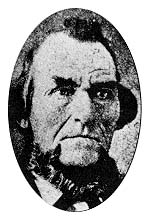
William Pratt.
For the next few years, the family participated with the Saints in the events of Kirtland and Missouri. Parley and Thankful had settled in Kaw township near Independence in 1832. When they were driven from Jackson County in 1833, they resettled in Clay County where Parley, who had been ordained a high priest by Joseph Smith in 1831, served on the stake high council with Orson and went to Kirtland in 1834 with Lyman Wight to report on the rising persecution. He helped Joseph Smith recruit the members of Zion’s Camp, including both William and Orson in 1834. William, as a result, was called as a seventy in the First Quorum on 28 February 1835, just a week after Parley and Orson both had been called as apostles.7 Orson, characteristically, was absent on another mission and wasn’t ordained until April.
Parley’s labors began immediately. Although Thankful, never very strong, was ill with consumption, he served a mission in the East, where he wrote his first book of poetry, “The Millennium, A Poem,” and several hymns including “Ye Chosen Twelve,” number 211 in our current songbook.
Kirtland was a base for William, Parley, and Orson for the next few years. William married Hannah Ward there on 1 January 1837, then followed Joseph Smith to Far West with the other Seventies in 1838; his first child—a daughter, Sarah—died shortly after the arrival.8 Orson, preaching in New York, baptized Sarah Marinda Bates in 1835 and married her on a return trip the next year. By October 1836, the new couple were in Kirtland where Orson farmed, worked as a merchant, invested in the Kirtland Safety Society, taught grammar and Hebrew in the schools, and taught himself algebra and astronomy. (See Journals, pp. 66, 91.)

Orson Pratt.
The apostasy that swept Kirtland in the wake of the Safety Society’s failure shook Orson’s faith; he filed a certificate of extortion against Joseph Smith and moved his family to New York, near Sarah’s parents.9 But his personal disillusionment had not affected his testimony; he continued missionary work, presided over the branch at New York, and helped publish one of Parley’s pamphlets, “Mormonism Unveiled.” (See Journals, pp. 92–94.) He made plans to join the Saints in Missouri as his testimony of the gospel reasserted itself, but the frozen river kept him at St. Louis until after the Saints, including William’s family, had been driven out of the state in the winter of 1838–39.
This was a hard time for all the Pratts. In about 1837, Anson’s family had moved from New York to new land near Detroit in Michigan. Parents Jared and Charity joined the household and Jared passed away there in 1839, at age seventy. Too poor to come to Nauvoo, Anson sent Charity there to live with William.
After the dedication of the Kirtland Temple in 1836, Heber C. Kimball gave Parley a double blessing: Thankful would bear a son and Parley would preach the gospel in Canada. Parley’s mission converted John Taylor, Joseph Fielding, and Isaac Russell, among others. On 25 March 1836 Thankful gave birth to a son named for his father, and she died three hours later “overwhelmed with a joy and peace indescribable.” (Autobiography, p. 166.)
Like Orson, Parley was shocked when the Kirtland Safety Society failed; he wrote two critical letters to Joseph Smith and supported Warren Parrish’s apostate position in public speeches.10 But rebuked by John Taylor who vigorously pointed out that “if the work was true six months ago, it is true today,”11 Parley went to the Prophet in tears, begged forgiveness, and later, with renewed zeal went on a mission to New York with his new wife, Mary Ann Frost Stearns, and her four-year-old daughter. There he published one of the classics of Mormon literature, The Voice of Warning. (See Autobiography, pp. 168–72.)
Parley was sentenced to death in 1838, but escaped from jail, appropriately on the Fourth of July, with Orson’s help, and joined his family, who had moved to Quincy. (See Autobiography, pp. 225, 250–52, 280.)
Within weeks—in August 1839—Orson and Parley were on their way to the British Isles. Orson spent most of his time in Scotland and published Remarkable Visions, the first printed account of Joseph Smith’s first vision. Parley had taken Mary Ann, her daughter, and his two sons with him. They were there until April 1843, four action-packed and fruitful years during which he served as first editor of the Millennial Star, wrote such hymns as “Jesus, Once of Humble Birth,” “The Morning Breaks,” “Come, O Thou King of Kings,” and “An Angel from on High,” conducted hundreds of meetings, published an edition of the Book of Mormon, presided over the Church after Brigham Young and the rest of the Twelve returned to the United States, and supervised emigration.
During Parley and Mary Ann’s absence, Anson’s wife, Sally, had died in December 1841, just a month after Charity had moved to Nauvoo. Anson married again, to Lucy Ann Lord, and they moved to Illinois, where Anson managed Parley’s farm while Parley was on his mission. William and Hannah had arrived in Nauvoo in August 1840, fresh from the Missouri expulsions. In September, malaria struck. Hannah, already weak from the Missouri experience and a pregnancy, was dead within two weeks. William was sick all that winter but “picked up a new family,” a widow, Wealthy Eddy Shumway, in February. Their little daughter was born in December 1841, just a month after Charity had come to help them.12
In Nauvoo, plural marriage was another challenge to the family. Parley had been taught it as early as 1839. He took his first plural wife in 1843, and by 1856 had also married nine others.13 The doctrine was especially difficult for Orson. While he was in England, his wife Sarah had become interested in John C. Bennett, who had self-servingly joined the Church and risen rapidly to prominence in Nauvoo’s city government. When Orson learned of their involvement, they used the teaching of plural marriage as a method of self-defense, accusing the Prophet of improper behavior to cover up their own guilty relationship. Orson believed Sarah and refused to sustain the Prophet in a meeting on 22 July 1842. Brigham Young, Heber C. Kimball, and George A. Smith spent several hours with Orson, trying to change his mind; but he refused to budge. He and Sarah were excommunicated on 20 August 1842 and Amasa Lyman was ordained to replace him in the Quorum of the Twelve. (See Journals, pp. 176–82.)
As with Parley, though, Orson’s basic testimony was unchanged, and soon his eyes were opened to John C. Bennett. Fully repentant, he and Sarah were rebaptized and Orson was reordained an apostle. (See Journals, pp. 187–88, 493, 517.) Later Orson would marry an additional nine wives.14
The next year, William and Parley were coming back from missions in the East when they learned that the Prophet had been murdered. (Autobiography, pp. 331–32.) Both of them were given further duties in the East. Brigham Young’s general call for outlying Saints to gather to Nauvoo as persecution intensified brought the fourth brother, Anson, to Nauvoo about 1845. But soon afterward, in 1846, Parley left for another mission in England. (See Autobiography, p. 345.)
Orson left Winter Quarters that spring with the advance company. He took scientific measurements on the way across the plains and was the first Saint to enter the Valley on 21 July 1847. He returned to Winter Quarters with Brigham Young and some other leaders, meeting Parley on the way who, with John Taylor, was leading a party of 580 wagons that reached the Valley in September. (See Autobiography, pp. 357–60.) The two brothers virtually changed places: Orson was called to go to England from Winter Quarters, a mission that would last until 1850.
Anson had not left Nauvoo with Orson and Parley in February 1846. He fought in the battle of Nauvoo, 12 September 1846, loading “the two first balls” into the Gheen cannon; then after the gun was disabled, he reported, he offered his services to “the battery in the Locust grove, & received a slight wound in my hand.”15
Anson subsequently took his family to Winter Quarters, then to St. Joseph, Missouri, where Lucy Ann died. In 1848 he married a third wife, Sarah Ann Walleigh, and took care of his mother, who died of cholera on 20 May 1849. Six days later, he died himself.16
Both parents and one son were now dead. Like Anson, William had also stayed behind in Nauvoo when Orson and Parley went to Winter Quarters in 1846. He and Wealthy lost their daughter Martha and their son Stephen, just children, that same year; but made their preparations and went to Council Bluffs. Getting to Salt Lake was difficult. William went to the Valley first; they lost a two-year-old child in 1851, and William collected the rest of the family in 1853–54.17 Eventually he added four more wives. Of their seven children, only two survived to adulthood, a burden of grief that William, even with his faith and faithfulness, found difficult to bear. Six months after his youngest child, a son named Joseph, was fatally burned in April 1870, William himself died.18
Meanwhile, Orson and Parley kept up their unrelenting labors to build the kingdom. Parley led an exploring expedition to southern Utah in 1849, organized a branch of the Church in San Francisco, and served a discouraging mission in Chile. (See Autobiography, pp. 361, 267–407.)
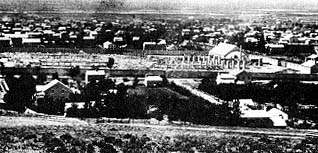
Elder Pratt’s Salt Lake City home, located in the center of the photograph, just beyond the temple lot.
On 13 May 1857, Parley was murdered while on a mission in Arkansas.19 Into the last five years of his life he packed a wealth of activity. He visited the settlements of Utah in 1853–54, went to California in 1855 and published his Key to Theology. In 1856 he went to New York to help John Taylor edit an newspaper, The Mormon, to defend the Church from anti-Mormon attacks. Writing to a friend in 1853, he summarized the scope and fullness of his life: “You ask for a history of my Life. … Its plain simple truths would be far more strange to you, than the thousand volumes of Modern Fiction.
“I have experienced poverty & riches, peace and war in some degrees. The extremes of honor and reproach have been my lot. I have tasted joys more sublime and sorrows more keen than ordinaryly falls to the lot of Mortals. … I have crossed the Atlantic six times. … I have been received almost as an Angel by thousands and counted an Imposter by tens of thousands. … I have been a farmer, a servant, a fisher, a digger, a beggar, a preacher, an author, an editor, a senator, a travellor, a Merchant, an elder and an Apostle of Jesus Christ. …
“Now my dear old friend; you may perhaps think I have been joking or boasting to you. But I have not: … How then can I write to you a history of my life! Is not truth stranger than fiction!!!”20
Then suddenly, his life was over. Orson was the remaining Pratt apostle during a life plagued by poverty but devoted to preaching the gospel and building the kingdom. He taught in the University of Deseret—now the University of Utah—from its founding in 1852, as a professor of astronomy. In the next few years, he published in Washington, D.C., The Seer, a periodical devoted to the doctrines of the Church, served a mission to England, helped survey the northern boundary line of Utah, served another mission to the East, moved part of his family to St. George for two years, went on a mission to Austria where “stringent laws” prevented his preaching, went to England, and finally returned to Salt Lake in 1867.
During the fifties, he and Parley both kept in touch with their remaining and non member brother, Nelson, in Ohio. Details of Nelson’s life are sketchy, but we know he had three wives and four children; three children survived him. Like his brothers, he prized his family. He described himself as having “but little to do with World[ly] drink [alcohol].” He missed his brothers, longed to see them, spoke wistfully of moving to Utah to see them, and repeatedly invited them to visit him.
In 1853, Nelson wrote Orson, telling him that he had read The Seer and found the doctrines “new and novel.”21 The next year, in another letter, Nelson mentioned to Orson that he had left the Freewill Baptists after several years of membership and that he wanted to discuss some points of doctrine with him.22
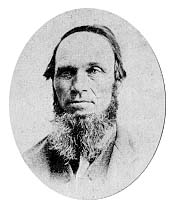
Nelson Pratt.
Highly encouraged, Orson wrote Parley that Nelson “believes that if there is any religion true it is our[s].”23 Orson never made the visit, but Parley did and spent a week in February 1857, just three months before his death, preaching to the family and holding meetings. Parley left Nelson a Book of Mormon, but with his own brand of Pratt determination, Nelson never joined the Church, although one wonders what might have happened had Parley not died or had Orson been able to spend some time with him. Nelson died, still in Norwich, in 1889.24
For the most part, Orson’s family was a great comfort to him and he loved them as devotedly as Parley loved his. But his family was scattered, some members living in Salt Lake, others in Tooele, and others in Fillmore. During 1868 when the whole territory was suffering from a food shortage, Orson’s family also experienced times of hardship and trial. But things took a turn for the better and some of the family regrouped in Salt Lake. A kind and loving father, Orson felt great happiness and comfort having his family closer during the last ten years of his life.
Before his death in 1881, Orson was sustained in 1874 as Church Historian; in 1877 he published the Book of Mormon in England in Pitman phonetic characters, returning to England the next year to publish the Book of Mormon and Doctrine and Covenants with verses, references, and footnotes. His collected pamphlets, The Orson Pratt Works, had been published in 1851, and his Key to the Universe was published in 1878. Diabetes plagued his last years even though he continued to serve as Speaker of the House for the Utah Legislature and helped organize the first Pratt Family Organization’s reunion on 21 July 1881; the family still meets as close as possible to this date annually in Salt Lake City. He died on 3 October 1881, on his deathbed asking Joseph F. Smith to place these words on his tombstone: “My body sleeps but a moment; but my testimony lives and shall endure forever.”25
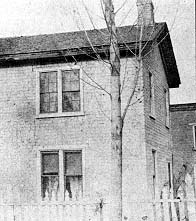
Salt Lake City home of Orson and Marion Ross Pratt.
Seven years later, when Nelson died, all of Charity and Jared Pratt’s children were gone. Today, however, their descendants number in the thousands. Those introduced by the Pratts to the gospel also number in the thousands.
A brief glance at the second generation shows us Parley, Jr., serving a mission to England, helping publish his father’s history, and lecturing on home industry. Helaman helped found Colonia Juarez in Mexico and preached the gospel in Mexico, New Mexico, Texas, and Arizona. Nephi Pratt served as president of the Northwest States Mission. Teancum helped found Helper, Utah; Lorus became a prominent illustrator; Moroni, a poet, helped colonize Meadowville; Milando became a member of the Salt Lake High Council and a patriarch. Many others were equally valiant and obedient.
In the third generation Harold and Rey Pratt were mission presidents in Latin America; Rey was also a member of the First Council of Seventy. Una Pratt Giles shared writing talent with Mary Pratt Parrish, in addition to genealogical activities and the active acquisition of Church historical sites. Another cousin, Amy Pratt Romney, was a prominent teacher; Gladys Pratt Young married Elder S. Dilworth Young.
For the thousands of Charity and Jared Pratt’s descendants, the poverty, displacement, grief, and suffering of these ancestors are simply a background against which their determination, love of God, and family affection shine brighter.